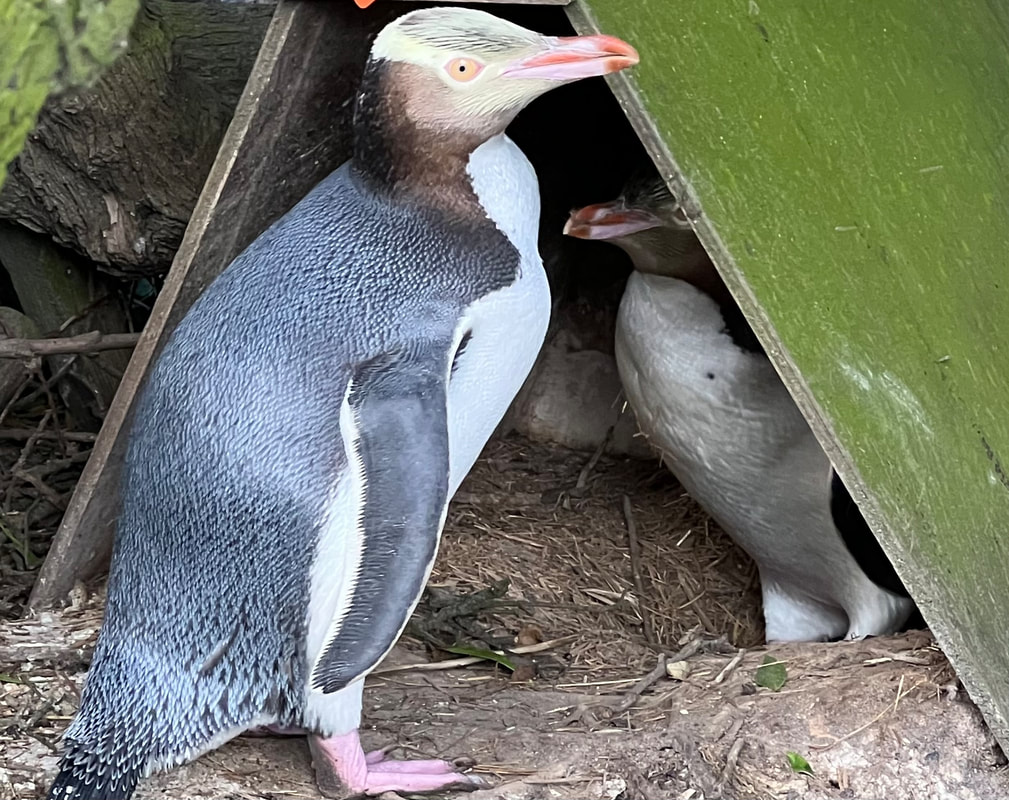|
Hello friends and family. Robbie and I joined Jim from DOC to process the dead whale on Monday. We arrived at 11am and the waves were lapping at the whale, but Jim got the job done anyway. He also discovered active mosquito larvae in a water trough. We gathered in the ropes and headed home. On Tuesday we were joined by Max from the Council. We outlined our fencing project and showed him the site and the issues. I will now apply for funding support. Robbie put the roof on the aviary. This will make it much easier to secure from mosquitoes. Tuesday was also the day that Chris got his paper published. Congratulations! If you would like access to the full paper, please email me. ABSTRACTRehabilitation of wildlife can be a meaningful conservation technique if rehabilitated animals contribute to the breeding population. Endangered Yellow-eyed Penguins (Megadyptes antipodes) are declining on South Island, New Zealand, where modelling published in 2017 predicted their extirpation by 2043. Four management plans dating back to 1989 have been implemented in attempts to mitigate threats. The first three plans overlooked rehabilitation whereas the most recent, published in 2020, regarded rehabilitation as essential to save the South Island population. We assess the outcome of four decades of management of Yellow-eyed Penguins at Moeraki, southeast South Island, by Penguin Rescue, a volunteer conservation organisation. Here, nest numbers have fluctuated but overall increased at a long-term annual average of 5%. Their proportion of the southeast South Island total rose from 1% (six of about 453 nests) in 1982 to 26% (43 of about 166 nests) in 2021. Since 1986 our management has included rehabilitation of all juvenile or adult Yellow-eyed Penguins we encountered locally with life-threatening injuries, emaciation or sickness, with 590 of these marked before release from our rehabilitation facility. We accounted for the effect of rehabilitation on nest numbers by subtracting the number of rehabilitated female breeders and their female descendants from the total number of female breeders. Without rehabilitation nest numbers at Moeraki in 2021 probably would have remained similar to the initial six nests in 1982 instead of the seven-fold increase through four decades. We conclude that rehabilitation is an effective management technique for this species. Wednesday was my day at the Toptip. These seem to come around very quickly. The weather forecast was dire, so I headed out with my hot coffee and hot water bottle and stayed comfortable despite the snow flurries coming past horizontally with the strong, bitter wind. I also excelled myself by buying a pair of gloves which will be ideal for penguin wrangling – unfortunately, they belonged to the rubbish man. Owen and Chrissie called in, looking fantastic after a bit of maintenance. I went to town on Friday to get the car serviced and checked out the Shags on Sumpter Wharf. It was quite busy when I arrived, but by the time I had got to the viewing point, the Spotted Shags had gone. No breeding yet!
Have a great week! Rosalie |
Archives
July 2024
|
Te whaka oraka o te takaraka
Penguin Rescue is a member of the Wildlife Rehabilitators Network of New Zealand








 RSS Feed
RSS Feed






